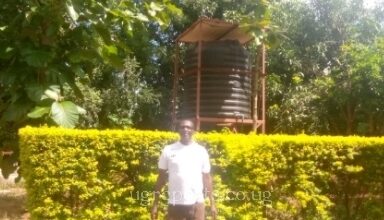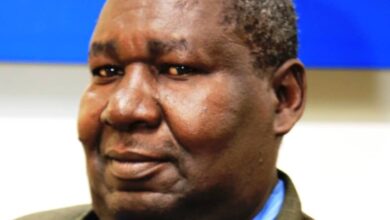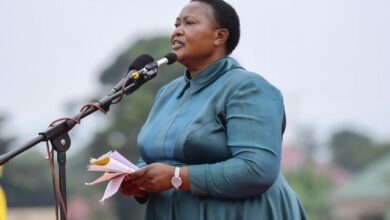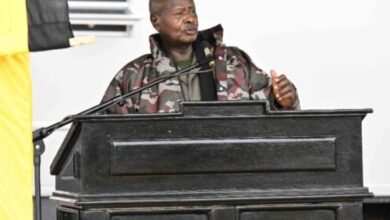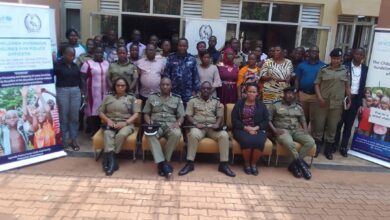Government allocates Shs1.6 billion for recruitment of district tourism officers
He acknowledged that although tourism is a profitable industry, the country has been slow to fully tap into the potential of its various tourism locations.
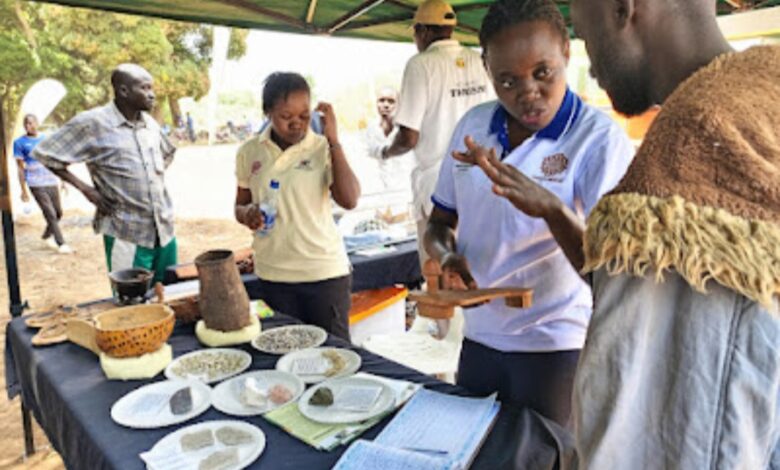
Dokolo: In a proactive effort to enhance the country’s untapped tourism sector, the Ministry of Tourism, Wildlife, and Antiquities has earmarked a total of 1.6 billion shillings in a conditional grant for the recruitment of tourism officers in the financial year 2024-2025.
Basil Ajer, the director of tourism, wildlife, and antiquities, disclosed this figure on February 7, 2025, during the groundbreaking ceremony for the 15 billion shilling construction project of the Kabaka Mwanga and Omukama Kabelega Heritage Centre in Dokolo District.
Ajer noted that numerous districts with recognized tourism sites, such as museums, monuments, historical sites, or faith-based tourism, lack a designated tourism officer; the allocated funds will assist these districts in hiring this crucial position.
He highlighted that Dokolo district, which features a prominent tourist destination, the Kabalega-Mwanga Heritage Centre, currently does not have a tourism officer.
“In our annual budget planning, we continuously allocate funds for this; that’s why we emphasize the importance of having tourism officers in the districts,” he stated.
Ajer further explained, “We have begun budgeting for conditional grants as a ministry; this financial year, we have set aside approximately 1.6 billion shillings, which will be distributed across the districts to promote tourism. It is essential to first identify the sites, narrate their stories, create content, and have someone who can collaborate with the ministry to promote them.”
He expressed his belief that having a professional tourism officer will help convey that tourism revolves around the product. This product refers to a site like this, and it is necessary to produce content about the product, which includes the stories and information that people can discover. When there is no tourism officer, there is a lack of content development and site enhancement.
He encouraged the community to abandon the outdated notion that tourism is solely linked to national parks or nature. Tourism can expand to encompass cultural aspects, historical elements, faith-based tourism, and much more, as demonstrated by the current initiative.
Ajer urged the chief administrative officer of Dokolo district to act swiftly in establishing a district tourism office, highlighting that the lack of such an officer presents a considerable gap in a district rich with potential.
On Friday, February 7, 2025, Martin Mugarra Bahinduka, the State Minister for Tourism, Wildlife, and Antiquities, officially handed over the Kabalega-Mwanga heritage site to RHOI Service Limited, the company tasked by the government with executing the construction of museums, three lodging facilities, the modification of the cave where the two Kings were captured by British colonists, and the construction of toilets, totaling a cost of 9 billion shillings.
Situated in the scenic Agabi Cell of Angai Ward in Kangai Sub-County, this construction project will cover a remarkable 30 acres, all on land graciously provided by the Dokolo District Local Government.
Minister Mugarra stressed the critical importance of tourism in driving Uganda’s economic development, emphasizing that revenue generated from tourism is key to financing essential public services.
He strongly encouraged the residents of Lango to explore domestic and cultural tourism, urging them to visit historical sites in Bunyoro and Buganda in order to learn about and appreciate the shared heritage.
He acknowledged that although tourism is a profitable industry, the country has been slow to fully tap into the potential of its various tourism locations.
Mugarra indicated that Uganda has 309 recognized tourism sites, yet fewer than 10 percent are fully developed.
Tourism roads in Lango Sub region
He assured the people of Dokolo that the Dokolo-Ocero to Namisale road has been prioritized for tourism, sharing that the president has ordered the tarmacking of the Amolotar-Dokolo Road as a crucial infrastructure project to enhance tourism access.
MP Felix Okot Ogong, the representative for Dokolo South, reinforced the significance of the Kangai heritage site for Uganda’s historical narrative, emphasizing the legacy of Kabaka Mwanga and Omukama Kabelega.
He stated that these two kings represented the struggle for human dignity and resistance against British colonialism, noting, “Their story embodies the spirit of unity in diversity, nationalism, and solidarity,” highlighting the vital role these leaders fulfilled even before the modern state of Uganda developed.
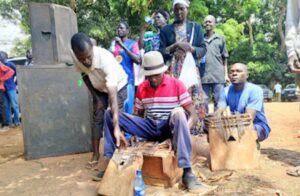
James Otoo Apili, the LCV chairperson of Dokolo, voiced his support for this initiative, proudly announcing that the district has offered a 30-acre piece of land to the government for the development of tourism infrastructure.
He believes that this project will firmly establish Dokolo on the global tourism map and hopes that the site will yield significant tourism-related revenue upon its completion.
Babra Akeceh, the Resident District Commissioner of Dokolo, expressed her worries to the contractor about the significance of ensuring value for money.
She also urged community members to provide services and guarantee the safety of workers during the project’s execution, emphasizing the necessity of local engagement.
Residents optimistic about tourism
Albert Ejam, the LC1 chairperson of Ajabi, stated that there have been plans to enhance this heritage site since the Amin era in 1973, but those plans never came to fruition.
He pointed out that the local community has actively participated in safeguarding the museum site and maintaining its integrity.
Ejam committed to mobilizing local youth to be trained as masons, allowing them to take advantage of job opportunities from this project.
Background of the Kabalega-Mwanag Heritage Centre
This site is among the 309 heritage sites officially gazetted by the Ministry of Tourism, Wildlife, and Antiquities, dedicated to honoring and remembering the courageous efforts of these two notable leaders in their fight against British imperialism in Uganda and East Africa.
Elders from Lango and Acholi recount through oral history that in 1899, during British attempts to extend their dominion over Buganda and Bunyoro, Omukama Kabalega of Bunyoro and Kabaka Mwanga of Buganda rebelled against colonial rule.
Their resistance led to intense confrontations, but ultimately, both were defeated and fled to Acholi via the Nile River, where they were received by Rwot Awich Lutinyamoyi. This protector, Awich, subsequently guided them to the Lango region, granting refuge for a time.
In this haven, the two kings built temporary shelters and carved a concealed cave far from their living areas to avoid detection. However, British forces soon discovered their location.
In April 1899, a significant force led by Lt. Col. Evarts carried out a surprise attack on the sanctuary.
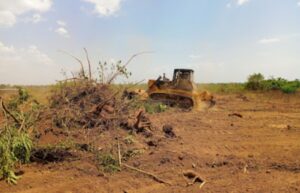
On April 9, an early morning raid led by Kakuangulu resulted in a decisive defeat for the Bunyoro army, culminating in Kabalega’s capture. He sustained gunshot wounds to his leg and arm, incapacitating him.
Following their capture, Kabalega and Mwanga were initially exiled to Kenya, later to Kismayo in Somalia, and ultimately to the Seychelles, where Kabalega died 24 years afterward, as noted by historian Steinhart.
Lango artifacts returned from Cambridge
On Friday, February 7, 2025, during the handover event for museum construction, the Department of Museum and Provenance presented a fascinating artifact: a headdress believed to have been taken from one of the Lango chiefs by British colonizers 100 years ago.
This historical item, along with 38 other artifacts recently returned to Uganda from Cambridge University as part of a three-year loan renewal, was revealed to an enthusiastic local audience.
The headdress, embellished with finely crafted beads and made from human hair, sparked excitement among the Lango people as they gathered to learn about its importance from tourism officials.
Decolonization through sharing narratives about our artifacts
Jackeline Nyiracyiza Besigye, the Commissioner of the Museum and Provenance, told this news portal that the Uganda Museum contains over one million artifacts collected by the British from 1900 to 1960.
Nyiracyiza noted that many artifacts were acquired from African kings by missionaries seeking to disrupt African social structures, with some being taken to various locations globally, particularly in Europe.
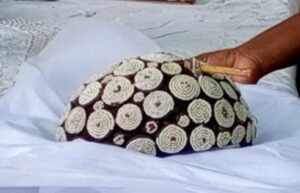
Nyiracyiza mentioned that while some artifacts have been returned after lengthy negotiations, others are on loan and are currently undergoing study for provenance; “the Department of Museum and Provenance is conducting provenance research with input from local historians and cultural leaders to provide essential historical insights about the artifacts, which may facilitate their permanent return to their original locations.”
The commissioner revealed in a recent initiative that they acquired 39 artifacts, mainly from Bunyoro, Buganda, and Ankole, alongside one significant headdress from Lango.
She expressed hope that once the Kabalega-Mwanga heritage site is finished, this important artifact will find a permanent place there, where its historical significance can be appreciated.
Do you have an advertisement or article you want to publish? Mail us at theugreports@gmail.com or WhatsApp +256394700683.


